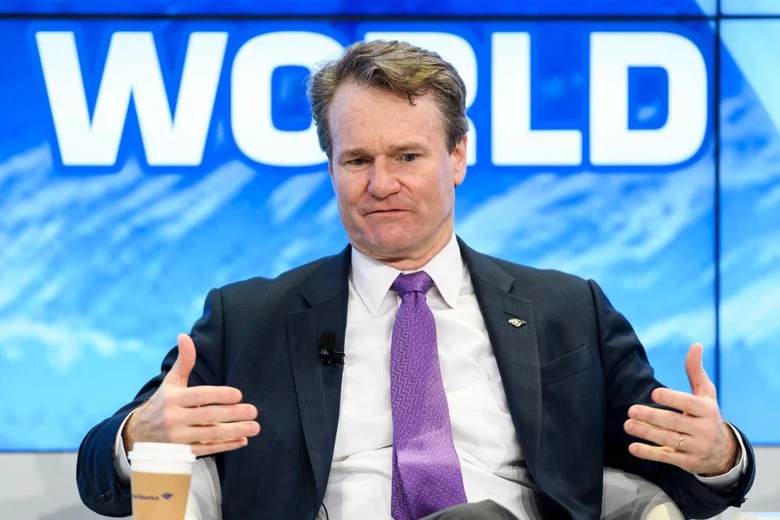This week offered a small but vivid reminder that we can’t expect banks to serve anybody except their shareholders.
On Monday, Bank of America ended a free checking service used by some of its lower-income depositors called e-banking, which it had been gradually winding down for several years. The final customers were transferred to new accounts that will require them to keep a minimum balance of $1,500 or agree to have $250 from their pay check directly deposited into their account every month. Otherwise, they will have to pay a $12 monthly fee.
Unsurprisingly, the move has gone over poorly with the public. For Americans with irregular incomes, even the modest direct deposits required to avoid getting hit with fees may be too much of a hurdle to clear. A Change.org petition protesting the move has more than 50,000 signatures at the moment. “Bank of America was one of the only brick-and-mortar bank [sic] that offered free checking accounts to their customers,“ the petition reads. “Bank of America was known to care for both their high income and low income customers. That is what made Bank of America different.“
Perhaps public pressure will make Bank of America decide to backtrack, but it seems unlikely. What this news mostly shows is that we shouldn’t rely on for-profit financial institutions to provide basic, essential services to the needy. We should rely on the post office.
In spite of what some of its customers may have thought, Bank of America never cared very much about its poorer depositors. That’s because banks don’t care about people. They care about profits. And lower-middle class households who have trouble maintaining a minimum balance in a checking account are, by and large, not very profitable customers, unless they’re paying out the nose in overdraft fees.
As Mehrsa Baradaran, a University of Georgia law professor and expert on consumer banking, pointed out to me, the entire concept of a “free“ checking account has long been a bit of a fiction. “They’ve never been free. That’s the truth of it. They’ve always been laced with overdraft fees and you’ve had to have minimums,” she said. “Free has been a misnomer for a while.” Banks have also had even less of an incentive to cater to low-income customers ever since federal regulations passed in the wake of the financial crisis started crimping their ability to collect overdraft charges.
According to the Wall Street Journal, Bank of America began offering its e-banking accounts in 2010 not as a public service, but as a marketing ploy meant to prod more customers into doing their banking online. Customers were spared a monthly fee, so long as they stayed away from tellers and elected to receive their statements via email. The program soon outlived its usefulness, however, as online banking quickly became the norm; Bank of America stopped offering it to new customers in 2013, and started moving current ones out in 2015.
None of this would be especially scandalous if so many Americans weren’t desperate for affordable banking options. Unfortunately, we live in a country where even middle class households have trouble getting access to basic financial services—about 7 percent of households are entirely unbanked, meaning they lack a checking or savings account, while another roughly 20 percent are underbanked, meaning they have to rely on expensive products like payday loans. It’s understandable that needier Bank of America customers who considered themselves lucky to have nabbed free checking would be dismayed to lose it.
So what’s the solution? You could go back to letting banks charge low-income families usurious overdraft fees in the hope that more of them will at least be able to open a nominally free account, though that seems less than ideal. You could also place your hopes in financial tech firms like Simple, which currently offers no fee, no minimum balance checking accounts without overdraft charges. It can do that, in part, because it doesn’t have any physical branches, which may suit former e-banking customers just fine, especially if they have smartphones. But if mobile banking were really the solution to America’s banking program, I’m not sure we’d still be talking about the issue. Simple is a great solution, in theory. In practice, not everybody has a smartphone or is that savvy a customer.
Instead, it’s probably time to stop hoping that profit hungry banks will provide affordable services to unprofitable customers. There’s been a long-running conversation about whether the United States should bring back the sort of postal banking system common across much the rest of the world, and that the U.S. had up until the mid 20th century. The U.S. Post Office could offer basic financial services, including bank accounts, to needier customers who aren’t being served today.
Though it may seem a tad far-fetched in the anti-government Trump era, this is not an idea that only journalists or academics have been interested in. The post office’s inspector general released an entire report exploring the concept in 2015, and Sen. Elizabeth Warren has been a vocal supporter of it. As Baradaran said to me, Bank of America and its ilk are “not even pretending” to care about the sort of people for whom $12 a month is too much to pay for a checking account. It’s time for the government to take those customers off their hands.
The article first appeared on Slate.

